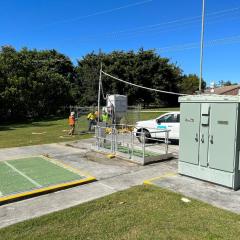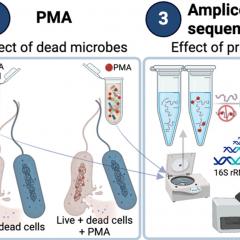 A University of Queensland research team has built the largest flat plate system for application of purple phototrophic bacteria.
A University of Queensland research team has built the largest flat plate system for application of purple phototrophic bacteria.
UQ’s Dr Tim Huelsen, a Research Fellow at the Advanced Water Management Centre, designed the 10 metre long bioreactor as a mediator for wastewater treatment and resource recovery.
“PPB uses the infrared fraction of sunlight as energy to turn soluble wastewater constituents, such as organics, nitrogen and phosphorous into biomass,” said Dr Huelsen.
“In the process, the PPB treatment turns a brown, smelly wastewater sludge into a bright red, almost odourless liquid –without emitting greenhouse gases.”
This discovery means that the purple technology is actually very green.
The purple bacteria themselves are highly flexible and potentially valuable, and this has led to further investigation into their potential as a valuable product stream.
The photobioreactor currently treats poultry processing effluent, on-site at Ingham’s Chicken, one of the largest chicken and turkey producers in Australia.
The focus of the trial is simultaneous organics, nitrogen and phosphorus removal and recovery.
Funded by an Advance Queensland Industry Fellowship and in partnership with GHD, Ridley, Aquatec Maxcon and Ingham, the AWMC is pushing for the scale up of this concept, moving out of the lab towards real life applications.
From the initial concept of resource recovery from domestic wastewater, the team has identified and developed a suite of technology products, including processes to generate fish feed (successful on barramundi), fertilizers, biodegradable plastics, high-value chemicals such as carotenoids, and for gas-desulfurisation.
The support from industry partners – Inghams, Ridley, GHD, and Aquatec Maxcon – have made this breakthrough treatment process possible.



